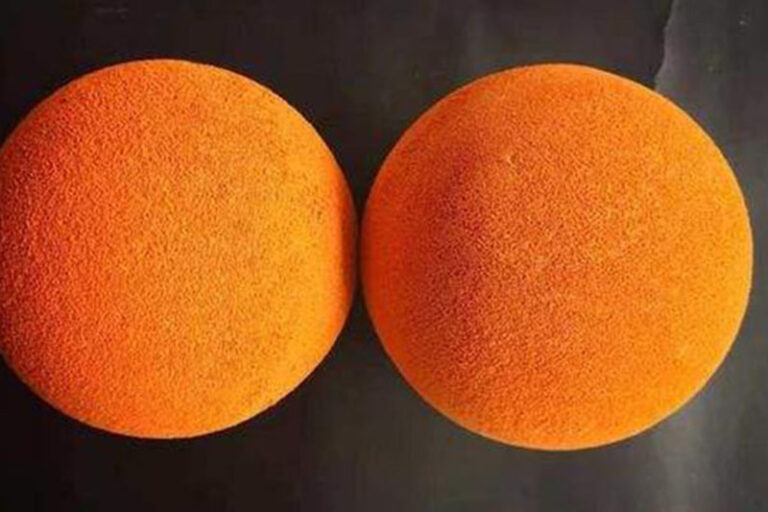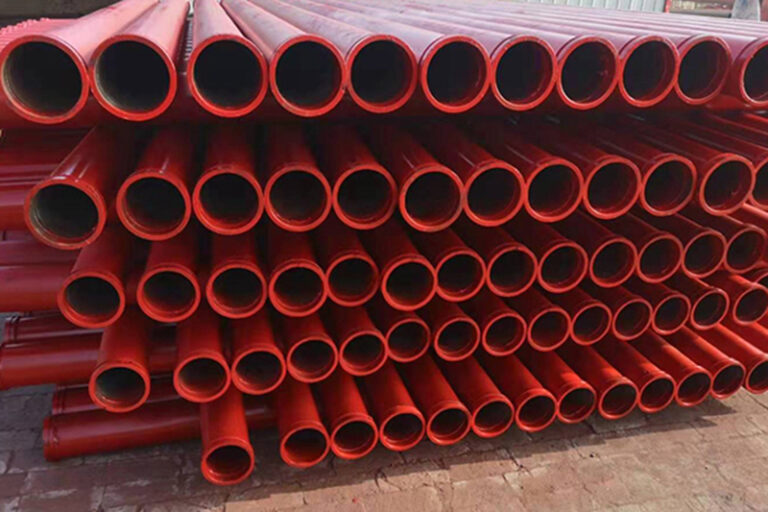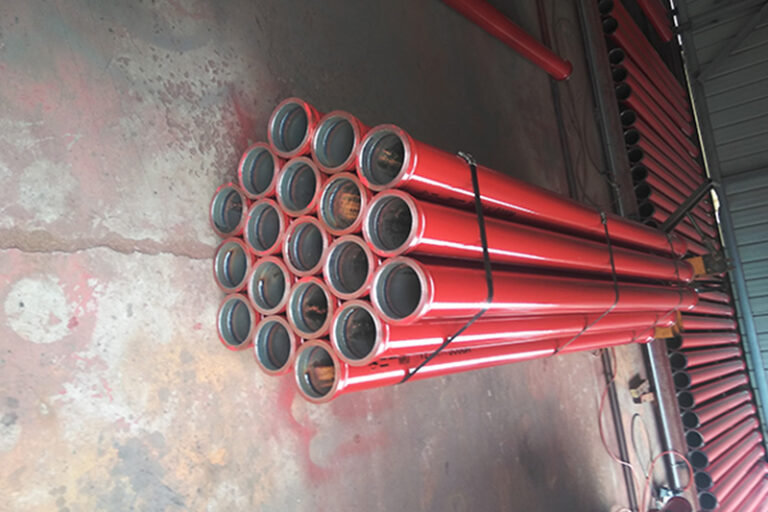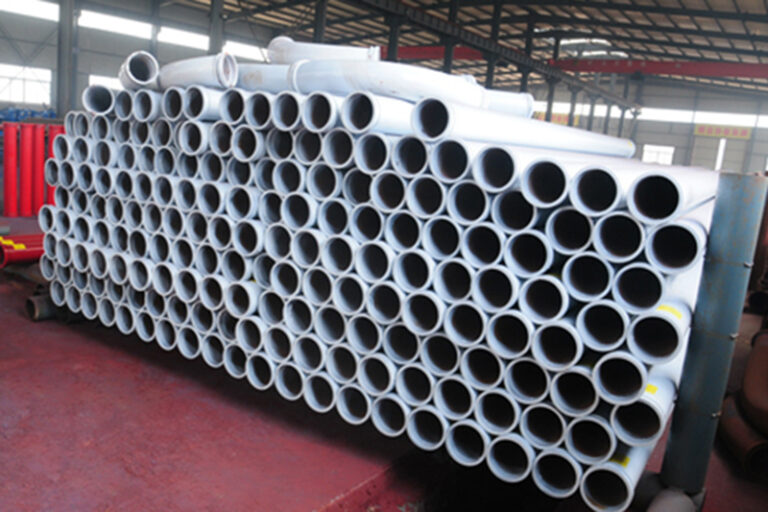What are concrete pump pipe fittings?
Concrete pump pipe fittings are an important part of the concrete pumping system, which are used to connect the concrete pump with the pouring point to ensure that the concrete is transported to the construction location stably and efficiently under high pressure. They are made of high-strength wear-resistant materials that can withstand the high-pressure impact and long-term wear of concrete pumps, and are indispensable fittings in all types of construction projects.
Types of concrete pump pipe fittings
According to the different uses and structures, concrete pump pipe fittings are mainly divided into the following categories:
Pump Pipe Straight Pipe (Concrete Conveying Pipe)
The pump pipe used for conveying concrete in a straight line is usually of standard length (e.g. 1m, 2m, 3m) and can be connected for use according to the construction demand.
Adopting high wear-resistant alloy steel or double-layer structure design to prolong the service life.

Pump pipe elbows
Used to change the direction of concrete transportation, common angles are 90°, 45°, 30°, 15°, etc..
The inner wall is specially hardened to reduce concrete flow resistance and wear.
Transition Pipe (Reducing Pipe)
Used to connect pumping pipes of different diameters to ensure smooth concrete flow.
Suitable for the transition needs between different pumping equipment.

Pumpline pipe clamping rubber ring (connecting and sealing concrete pumping pipe users)
Used to quickly connect and secure the pumping pipe to ensure a tight seal and prevent concrete leakage.
Usually made of high-strength cast steel or forged steel for high pressure resistance.
Pump pipe hose (the end of the user’s concrete delivery pipe, convenient building concrete)
Advantages of concrete pump pipe pipe fittings
High strength and wear-resistant: adopting high-quality alloy steel or composite material, it is resistant to pressure and impact, and reduces the frequency of replacement.
Good sealing: precision machining ensures no leakage at the connection, improving pumping efficiency.
Convenient installation: standardized design, quick disassembly and installation, adapt to different construction environments.
Long service life: quenched, carburized and other processes, wear resistance is several times higher than ordinary steel pipe.
Widely applicable: suitable for housing construction, bridges, tunnels, water conservancy and other various concrete pumping projects.
How to choose the right concrete pump pipe pipe fittings?
According to the model of pumping equipment, choose the matching pipe diameter and connection method (e.g. 125mm, 150mm, etc.).
Consider the construction environment: high-pressure pumping needs to choose thickened or double-layer wear-resistant pipe; corrosive environment can choose galvanized or special coating fittings.
Focus on wear-resistant performance: choose heat-treated or ceramic-lined fittings to reduce long-term use costs.
Brand and quality: choose products produced by regular manufacturers to ensure that the material and production process up to standard.







What is the standard diameter range for concrete pump pipes, and how does it affect the concrete delivery process?
There are various specifications and models of concrete pump pipes, each with a corresponding marked diameter, mainly for the convenience of connecting concrete pump pipes. The diameter of concrete pump pipes has no effect on transportation, while the inner diameter of concrete pump pipes affects transportation, so it is necessary to choose a suitable inner diameter.
The weight and thickness of concrete pump pipes are crucial factors in their performance and application. Choosing the right specifications and models ensures efficient concrete transportation in construction projects. Proper installation techniques, such as adjusting gaps and using pipe clamps, are essential for maintaining the integrity of the pump pipes. Different thicknesses and diameters cater to various project requirements, enhancing durability and efficiency.
How do the specifications and models of concrete pump pipes impact their performance in different construction scenarios?
The specification model of the concrete pump pipe with to be selected according to the pumping parameters, generally the concrete pump is labeled at the factory. The choice of pump pipe needs to be determined according to the construction environment, pumping volume, construction process.
The same material of concrete pump pipe, the larger the wall thickness, the more wear-resistant, the larger the pumping volume. The larger the wall thickness, the heavier the weight of the pump pipe, according to the environment to determine.